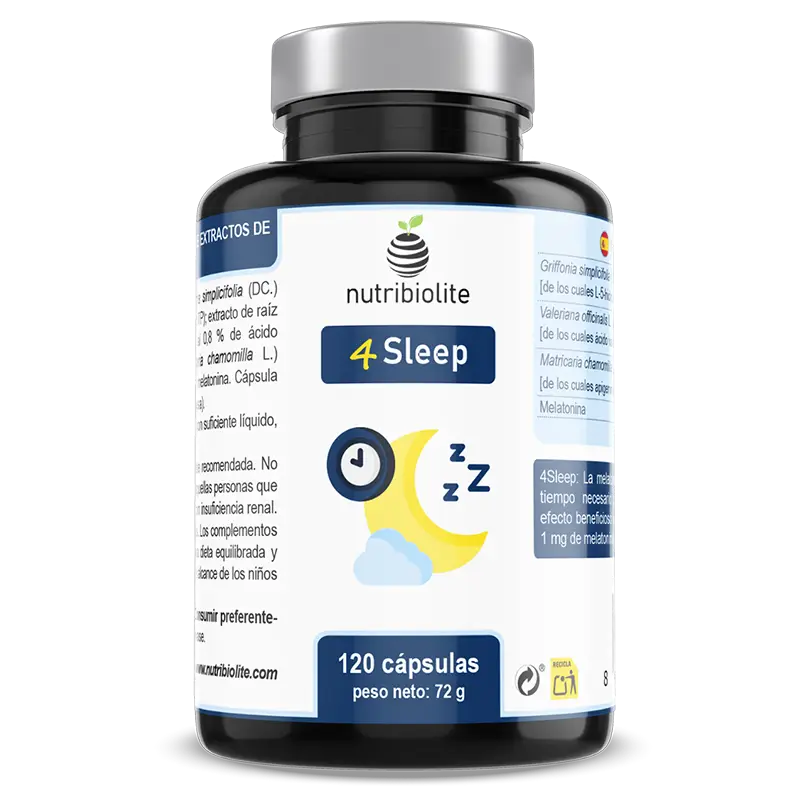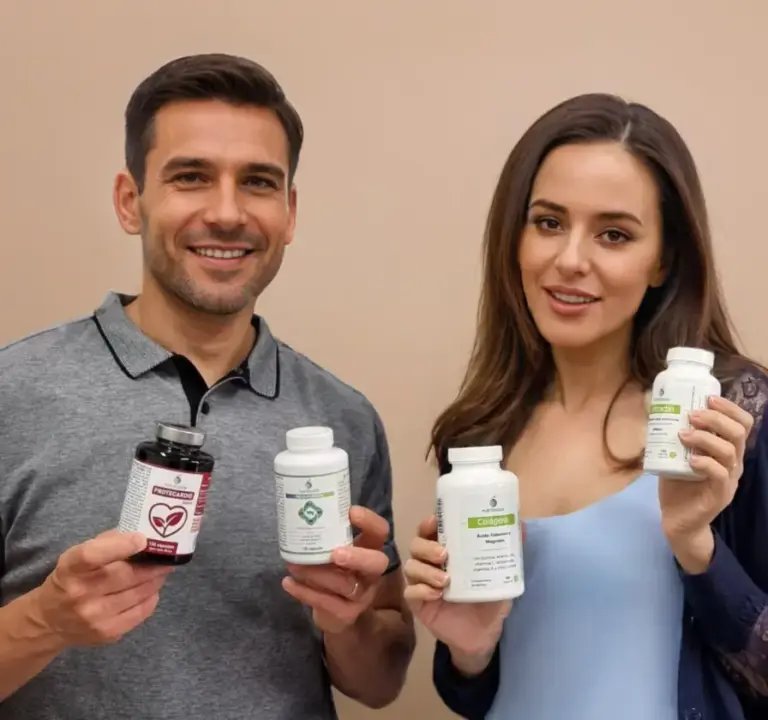A recent clinical trial, published in 2025 in the Journal of Translational Medicine(study in Journal of translational medicine 2025), showed that when the body moves intensely and briefly for just four weeks, the night changes. The participants, who did high-intensity intervallic exercise, known as HIIT, slept better and felt less sad and less anxious than those who just received general health advice.
Put simply, the study suggests that day and night are closer than we think. What you do with your body during 9 minutes of controlled exertion can be reflected hours later in how you fall asleep, how you rest and how you feel emotionally when you wake up. For anyone who feels their sleep and rest have become fragile, this research opens a concrete, small and very human door.
Why this study matters for your sleep and rest
The work was conducted with 35 female university students with what is known as normal-weight obesity, i.e. a body mass index in the healthy range, but with a high percentage of fat. For four weeks, 17 of them did high-intensity interval exercise five days a week and 18 were part of a control group with health education but no training.
Those who trained clearly reduced their depression and anxiety scores and improved their sleep quality as measured by a validated questionnaire. The sleep scale, which ranged from 0 to 21, went from a mean value of 5.1 to 3.5, indicating more stable rest. In addition, the better they slept, the fewer symptoms of sadness and nervousness they had. The link between sleep and mood was particularly strong after the exercise programme.
High-intensity intervallic exercise, what it is and what they discovered
High-intensity intervallic exercise, or HIIT, involves alternating very intense efforts with short breaks. In this study, participants performed sets of lunges, squats, push-ups and other movements for 40 seconds, followed by a 20-second pause, in 9-minute blocks, five days a week.
After just one month, depression scores dropped from 5.8 to 3.2 points and anxiety scores from 5.1 to 2.8. Not extreme figures, but a consistent change in a very short time. Sleep quality also improved, suggesting that the body, when it receives an intense but brief physical stimulus, reorganises its night and, with it, part of its emotional landscape.
The authors propose several physiological explanations. Such exercise can increase neurotransmitters such as serotonin and dopamine, promote the release of melatonin, the hormone that signals the onset of sleep, modulate the stress axis and reduce inflammatory signals that disrupt internal rhythms. It is a symphony of adjustments that results in a more orderly sleep and a slightly lighter mind.
When sleep and rest break down, the day suffers too.
The female students in the study not only had more body fat, they were also less fit, more likely to be sedentary, and had more problems with sleep and emotional well-being. It is an increasingly common combination, even in people of apparently normal weight.
The key finding is that, in this group, sleep quality and mood were closely intertwined after the exercise programme. Those who slept better felt less depressed and less anxious. This suggests that, in certain profiles, sleep and rest is a kind of hinge between the body and the mind. If that hinge is greased with movement, the whole system runs more smoothly.
The study has important limits. The sample is small, only young women, the intervention lasted four weeks and questionnaires were used, not objective measures of sleep such as polysomnography. Still, it offers a clear picture – brief, intense exercise can be a realistic tool to improve sleep and rest and support emotional balance in people with demanding lives.
Simple habits to align active day and restful night
The practical lesson from this research is that sleep and rest begins many hours before bedtime. It’s not just a question of the pillow, but of how movement, light and calm are distributed throughout the day.
Some simple ideas that fit with what the study shows are these. Introduce short sessions of vigorous exercise, adapted to your physical condition, several days a week, for example 8-10 minute blocks of supervised dynamic movement if possible. Take care of the transition into the evening, with fewer screens, soft lights and a light dinner. Set aside 20-30 minutes before bedtime to slow down with quiet reading, slow breathing or guided meditation.
When these gestures are repeated, the body begins to recognise a pattern: daytime is activation time, nighttime is repair time. The study reminds us that this change does not take years – within four weeks, measurable improvements in sleep and rest and emotional well-being were already observed.
Nutrients that accompany the natural pathway to sleep and rest
In addition to movement, the study mentions that exercise can influence key substances such as serotonin and melatonin, which connect brain, mood and sleep. This is where nutrition and specific nutrients come into play.
5-hydroxytryptophan, known as 5-HTP, is an intermediate between tryptophan from food and serotonin, which in turn is a precursor to melatonin. It is like a central piece in the chain linking what you eat to your internal clock. Plants such as valerian and chamomile have been used for centuries to promote relaxation and prepare the body for rest. Melatonin, meanwhile, acts as a signal to initiate sleep when released at the right time.
The underlying message is similar to that of the study, when we support the body at various points – movement, light, nutrients and a calm environment – sleep and rest tends to reorganise itself more harmoniously.
How 4Sleep fits into this vision of sleep and rest
Nutribiolite’s 4Sleep, a food supplement based on melatonin and extracts of Griffonia simplicifolia, valerian and chamomile, is in the same physiological line. It is not intended as a stand-alone remedy, but as a support that follows the logic that the body itself uses to prepare for the night.
Each capsule provides 1 mg of melatonin, an amount endorsed by the European Food Safety Authority to help reduce the time it takes to fall asleep when taken shortly before bedtime. It also includes 245 mg of Griffonia extract standardised to 20 per cent 5-HTP, i.e. 49 mg of 5-HTP, which enhances the natural production of serotonin and, during the night, melatonin.
The formula is supplemented with 125 mg of valerian root extract, standardised to 0.8 per cent valerenic acid, and 108 mg of chamomile flower extract, standardised to 1.8 per cent apigenin. These plants contribute to relaxation and a more restful sleep, according to EFSA-assessed health claim applications, without generating dependence or residual drowsiness upon awakening.
Just as HIIT acts as a brief, targeted stimulus that reorganises day and night, 4Sleep accompanies the internal sleep pathway with a precise combination of melatonin, 5-HTP and plant extracts, always within doses considered safe by the European authorities.

Melatonin 1 mg and 5-HTP with valerian and chamomile to accompany your sleep and rest in a natural way.
Frequently asked questions about HIIT, sleep and 4Sleep
What exactly does it mean to improve sleep quality in this study?
Participants who did high-intensity intervallic exercise for four weeks had lower scores on the sleep quality questionnaire, indicating fewer awakenings, a better sense of rest and less difficulty falling asleep. Exact hours on machines were not measured, but there was a clear change in the subjective experience of sleep and rest.
Do I have to do HIIT to notice benefits in my sleep and rest?
The study focused on HIIT because it is a very efficient form of exercise in a short time. However, any regular physical activity that raises your heart rate and suits your condition can help improve sleep and rest. The important thing is consistency and combining it with good sleep hygiene.
How does 4Sleep help to accompany sleep without being a medicine?
4Sleep is a food supplement that provides melatonin 1 mg, 5-HTP from Griffonia and standardised extracts of valerian and chamomile. These ingredients support the body’s natural mechanisms related to sleep reconciliation, relaxation and the balance of the sleep-wake rhythm, without claiming to treat or cure sleep disorders.
When does it make sense to use a supplement like 4Sleep?
It makes sense to use a supplement such as 4Sleep when the natural sleep rhythm is disturbed and habits alone are not sufficient to restore it. Situations such as prolonged stress, long journeys with time zone changes or periods of hormonal imbalance can affect the biological clock and make it difficult to rest. In these cases, 4Sleep offers physiological support thanks to its formula based on melatonin 1 mg, which helps initiate sleep, together with 5-HTP from Griffonia simplicifolia, which promotes the natural production of serotonin and melatonin. It also includes valerian and chamomile extracts, recognised for their relaxing effect without causing dependence or residual drowsiness. Together, these ingredients act in a complementary way to accompany the body’s natural rhythms and promote a more restful sleep.
How and when is it recommended to take 4Sleep to support sleep and rest?
The general recommendation is to take one capsule of 4Sleep about 30 minutes before bedtime, always at the same time and with a glass of water. This works best if accompanied by a consistent night-time routine, light dinner, low light, no screens and a quiet environment that signals to the body that it is time to enter sleep mode.
This content is for information only and is not a substitute for the advice of a health professional.
















